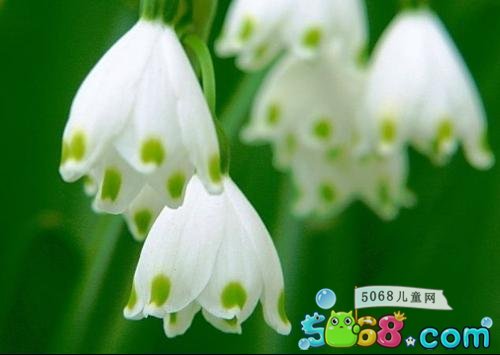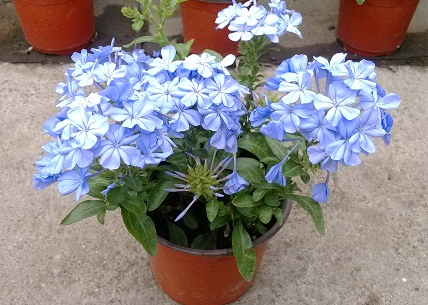What are the cultivation techniques of snow dripping flower culture
Snowflake lotus flower, also known as snow bell flower or lily of the valley daffodils, is suitable for gardens and rock gardens. It can also be used for interior decoration or cut flower potted plants. It is deeply loved by people. What kind of cultivation techniques do you want to use to breed snow lotus? The following is the editor who introduces the cultivation techniques of snow lotus.

Humidity management
Snow lotus likes the dry air environment, this environment is too long, not suitable for rainy days, vulnerable to bacterial infection. Avoid rain and keep the leaves dry at night. The better relative humidity of the air is 40% to 65%.
Temperature management
Snowflakes are like cool climates, which are afraid of heat and difficult in summer; when the temperature drops below 10 °C, the intolerant frost will go to sleep. The most suitable growth temperature is 15 to 28 ℃.
Lighting management
In late autumn, winter and early spring, as the temperature is not very high, direct sunlight should be given to promote photosynthesis and flower bud, flowering and fruiting. If you encounter a high temperature or in summer, you need to cover it with about 50% of the sun. After flowering and placed indoors for protection, it should be placed near the doors and windows in the southeast to prolong the flowering period and increase the number of flowers as much as possible.
Fertilizer management
Snowdrops do not need much fertilizer and water, and are afraid of fertilization, fertilization and partial application of nitrogen, phosphorus and potassium. It is required to follow the principles of fertilization (water), such as light fertilizer and dilution, small amount and multi-nutrition. :
Spring and autumn season
These two seasons are the peak seasons for its growth. Fertilizer and water are managed according to the sequence of "Huabao" & & quoquo; & rdquo;-clear water-& & quoquo; Huabao & rdquo; & & quoquo; Huabao & rdquo;-clear water (at least twice a week), with an interval of about 1 to 4 days for outdoor maintenance and 2 to 6 days for indoor maintenance. Plants are usually sprayed when the temperature is low in the morning or evening. Watering time should be arranged as much as possible in the morning when the temperature is low.
Winter
In the winter dormancy period, the main work is to control fertilizer and water control. Fertilizer and water management is in accordance with "Huabao"-clear water-& lt;; Huabao "- clear water-clear water cycle, the interval is about 7 to 10 days, the interval between sunny or high temperature is shorter, and the interval between rainy or low temperature is longer. When the noon temperature is high in sunny days, watering time should be arranged as far as possible.
Canning
When the seedlings fill the basin, first place a coarse-grained base or ceramsite 2-2 cm thick at the bottom of the basin as a waterproof layer, and sprinkle a layer of completely decomposed organic fertilizer as base fertilizer with a thickness of about 1-2 cm. Then, cover with a layer of matrix about 1 to 2 centimeters thick, and then separate the plant from the roots to avoid burning the roots.
The substrate on the basin can be selected from the following substrates. Peat + perlite + ceramsite = 2 + 2 + 1; peat + slag + ceramsite = 2 + 2 + 1; sawdust + vermiculite + medium coarse river sand = 2 + 2 + 1. When the pan is finished, pour in the water once and leave it in a slightly cool environment for a week. When transplanting seedlings, dig the planting hole first, and sprinkle a layer of organic fertilizer at the bottom of the planting hole as the base fertilizer (base fertilizer). It is about 4-6 cm thick, then cover a layer of soil and put it into the seedlings to separate the roots so as not to burn them. After placing the seedlings, backfill the soil, cover the roots, and pour into the soil with feet and water.
Fertilization
Base fertilizer and a small amount of bone meal should be planted on the ground. If bulbs are not planted immediately after harvest, they should be temporarily buried in wet sand. Snow lotus should be planted in sunny or sparse forests and need fertile soil and good drainage.
Time: 2019-05-13 Click:
- Prev

How to cultivate blue snowflakes in winter
Blue snowflakes are strong, heat-resistant, heat-resistant and humid, with few diseases and insect pests, simple management, long viewing period and elegant green leaves. The hot summer gives people a cool feeling. Can be decorated with potted plants and balconies. How do you reproduce it? Let's share the methods of raising blue snowflakes in winter. Let's take a look.
- Next

Hydroponic culture methods of green flowers and banyan trees
Eucalyptus hydroponics preparation materials first of all, go to the flower market to buy a small banyan tree, you can choose lobular scorpion. When choosing, we should pay attention to the main plants, the branches are evenly distributed, the green leaves are clear, and they are not dry. Look for a cylindrical glass basin about 10 centimeters in diameter and 3 centimeters high. Wash and use it.
Related
- Fuxing push coffee new agricultural production and marketing class: lack of small-scale processing plants
- Jujube rice field leisure farm deep ploughing Yilan for five years to create a space for organic food and play
- Nongyu Farm-A trial of organic papaya for brave women with advanced technology
- Four points for attention in the prevention and control of diseases and insect pests of edible fungi
- How to add nutrient solution to Edible Fungi
- Is there any good way to control edible fungus mites?
- Open Inoculation Technology of Edible Fungi
- Is there any clever way to use fertilizer for edible fungus in winter?
- What agents are used to kill the pathogens of edible fungi in the mushroom shed?
- Rapid drying of Edible Fungi

